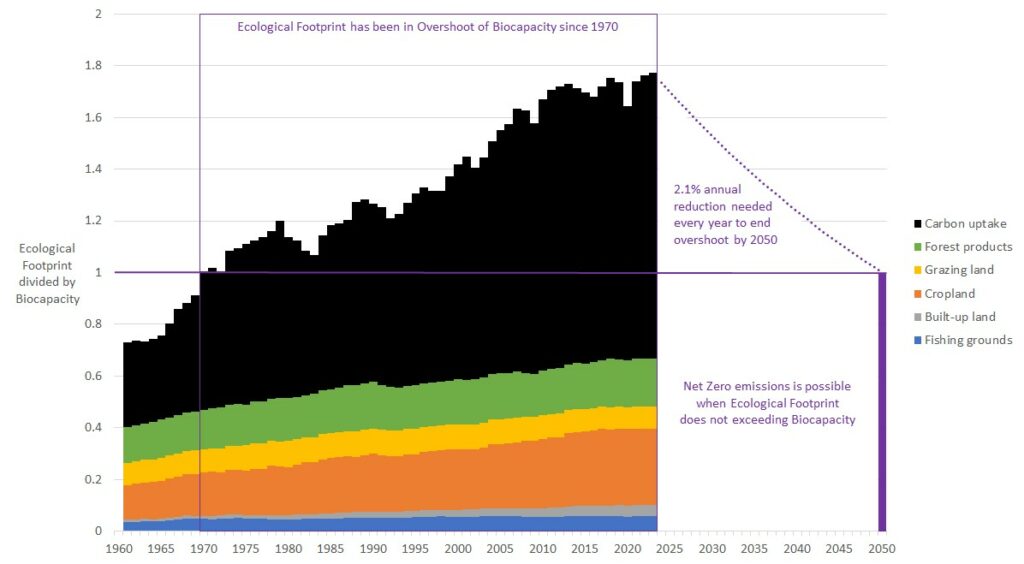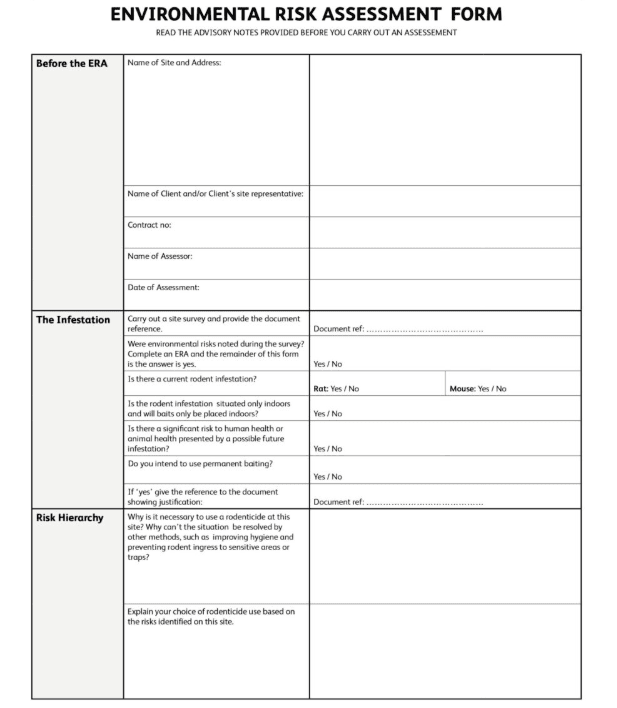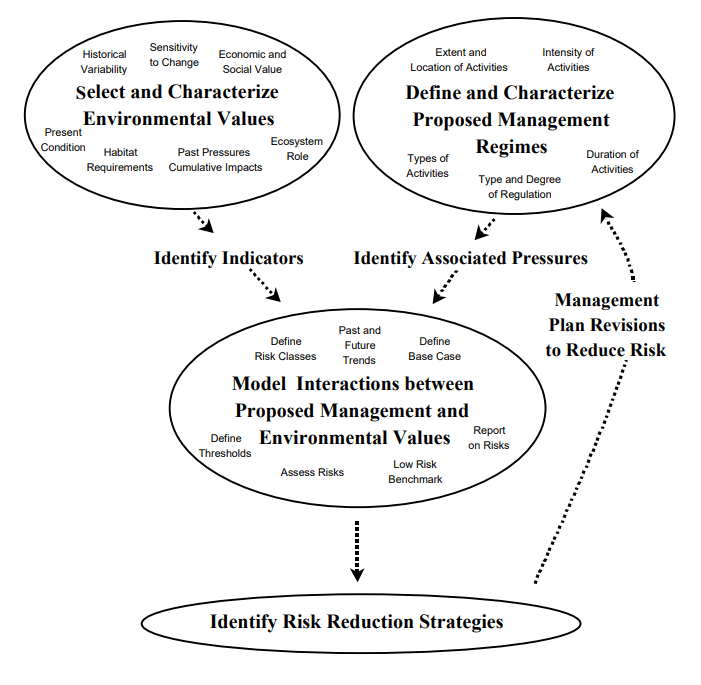Introduction
The concepts of the ecological footprint and environmental risk perspective serve as critical tools for understanding the relationship between human activity and the planet’s ecological systems. The ecological footprint quantitatively measures humanity’s demand on Earth’s resources, while the environmental risk perspective analyzes potential threats to these systems and human well-being. Together, these frameworks provide a comprehensive view of sustainability, resource management, and the implications of environmental degradation.
Read More- Sustainability in India
Ecological Footprint
According to Scott et al (2021), the ecological footprint is a quantitative indicator that measures the biologically productive land and water area required to produce the resources consumed and absorb the waste generated by human activities.
Expressed in global hectares (gha), the footprint compares human consumption to Earth’s biocapacity, the capacity to regenerate these resources sustainably.

Overshoot in Ecological Footprint retrieved from https://www.yorku.ca/news/2024/07/31/record-breaking-year-of-consumption-leads-to-ecological-footprint-overshoot/
The ecological footprint concept was pioneered by William Rees and Mathis Wackernagel in the 1990s as a response to the growing realization of unsustainable resource use. Their work highlighted the phenomenon of “ecological overshoot,” where human demand exceeds the regenerative capacity of Earth’s ecosystems (Rees & Wackernagel, 1996). This conceptual framework has since become a cornerstone of environmental science and policy discussions.
Components of the Ecological Footprint
The ecological footprint is divided into six primary categories-
- Carbon Footprint- The largest component, representing carbon dioxide emissions from fossil fuel combustion.
- Cropland and Grazing Land- Land required for food, fiber production, and livestock grazing.
- Forest Products- The demand for timber, paper, and other forest resources.
- Built-up Land- Urban and infrastructure-related land use.
- Fisheries- Marine and freshwater resources required for fish and seafood consumption.
Since the 1970s, humanity has been in a state of ecological overshoot, with resource consumption exceeding Earth’s biocapacity annually. As of 2023, humans use resources equivalent to 1.75 Earths each year (Global Footprint Network, 2023). This trend underpins challenges such as resource depletion, habitat destruction, and biodiversity loss.
Read More- What is Sustainability?
Environmental Risk Perspective
The environmental risk perspective encompasses the analysis, management, and mitigation of potential hazards impacting ecological systems and human societies. It integrates scientific, economic, and social dimensions to assess risks associated with climate change, biodiversity loss, pollution, and natural disasters.

Sample Environment Risk Assesment Form
Environmental risks are uncertainties stemming from natural or anthropogenic hazards that threaten ecosystems, human health, or infrastructure. Key examples include climate change-induced events like hurricanes, droughts, and sea-level rise, as well as human-induced risks such as industrial pollution and deforestation (IPCC, 2021).

Terms used in environment risk perspective
Environmental risk assessment typically involves several steps-
- Hazard Identification- Recognizing potential threats (e.g., increasing atmospheric CO2 concentrations).
- Exposure Analysis- Determining who or what is vulnerable (e.g., coastal communities exposed to rising sea levels).
- Vulnerability Assessment- Evaluating sensitivity and adaptive capacity of systems or populations.
- Impact Analysis- Quantifying potential consequences (e.g., economic losses, biodiversity impacts).
- Risk Management- Developing strategies to mitigate, adapt to, or prevent identified risks.
Some examples could include- rising greenhouse gas concentrations have led to global warming, intensifying extreme weather events such as hurricanes, floods, and wildfires. Habitat destruction and overexploitation have caused alarming rates of species extinction, compromising ecosystem services and stability. Overuse, pollution, and climate change are threatening freshwater availability in many regions, affecting agriculture, health, and industry.

Model for Environment Risk Assessment
Interconnection Between Ecological Footprint and Environmental Risk
The ecological footprint and environmental risk perspectives are closely linked. An increasing ecological footprint exacerbates environmental risks, as the overexploitation of natural resources often leads to ecosystem degradation, reduced resilience, and heightened vulnerability to hazards.
Case Study- Deforestation in the Amazon
The Amazon rainforest, often referred to as the “lungs of the Earth,” plays a critical role in sequestering carbon and supporting global biodiversity. However, deforestation for agriculture and logging has increased the region’s ecological footprint, reducing its capacity to act as a carbon sink. This has intensified environmental risks such as biodiversity loss and climate feedback loops (Laurance et al., 2018).
Some other ways in which they are connected include-
- Urbanization and Environmental Risks- Urban areas typically have higher ecological footprints due to concentrated energy use, waste generation, and land conversion. These cities face increased risks such as heat island effects, flooding from impervious surfaces, and air pollution. Integrating green infrastructure and sustainable urban planning can mitigate these impacts (Seto et al., 2011).
- Climate Feedback Mechanisms- Excessive ecological footprints, particularly from carbon emissions, amplify climate-related risks. Melting ice caps, for instance, reduce albedo (the reflectivity of Earth’s surface), accelerating global warming and creating a feedback loop that heightens environmental vulnerabilities (IPCC, 2021).
Limitations of the Ecological Footprint
Some limitations of the concept of ecological footprint include-
- Oversimplification- Critics argue that the footprint metric reduces complex ecological interactions to a single value, potentially oversimplifying the issue (Van den Bergh & Grazi, 2014).
- Technological Advancements- The metric does not account for technological innovations that improve resource efficiency or reduce waste.
- Regional Variations- Global aggregates can obscure local and regional disparities in resource use and ecological impact.
Ways to Reduce Ecological Footprint
Some innovative ways to reduce ecological footprint includes-
- Energy Efficiency- Switching to renewable energy sources like solar or wind can significantly reduce carbon footprints. Use energy-efficient appliances and LED lights to lower electricity consumption. Smart home devices, such as programmable thermostats, can further optimize energy use.
- Sustainable Transportation- Opt for public transport, cycling, or walking whenever possible. Carpooling reduces the number of vehicles on the road, cutting emissions. Transitioning to electric or hybrid vehicles is another impactful way to decrease carbon output.
- Sustainable Diet- Eating more plant-based foods and reducing meat and dairy consumption can lower your ecological impact, as livestock farming is resource-intensive. Choose locally sourced, seasonal produce to minimize transportation emissions and energy use.
- Water Conservation- Simple steps like fixing leaks and installing water-efficient fixtures can conserve water. Rainwater harvesting provides an eco-friendly way to water plants, while being mindful of water usage during daily activities helps prevent waste.
- Waste Reduction- Adopt the “reduce, reuse, recycle” principle to minimize waste. Avoid single-use plastics, repurpose items when possible, and separate recyclables to ensure proper disposal. Composting organic waste is another sustainable practice.
Conclusion
The ecological footprint and environmental risk perspectives provide complementary insights into humanity’s impact on the planet and the challenges of achieving sustainability. By measuring resource demand and assessing potential hazards, these frameworks highlight the urgent need for systemic change. However, their success depends on global cooperation, innovative solutions, and a commitment to equity and justice. Embracing these approaches offers a pathway toward a more sustainable and resilient future.
References
Beck, U. (1992). Risk Society: Towards a New Modernity. SAGE Publications.
Global Footprint Network. (2023). Ecological footprint and biocapacity. Retrieved from https://www.footprintnetwork.org
IPCC. (2021). Climate Change 2021: The Physical Science Basis. Cambridge University Press.
Laurance, W. F., et al. (2018). The future of the Amazon. Nature Sustainability, 1(9), 409-416.
Rees, W., & Wackernagel, M. (1996). Our ecological footprint: Reducing human impact on the Earth. New Society Publishers.
Scott, B. A., Amel, E. L., & Manning, C. M. (2021). Psychology for sustainability. Routledge.
Seto, K. C., et al. (2011). A meta-analysis of global urban land expansion. PLOS ONE, 6(8), e23777.
United Nations (UN). (2015). Transforming our world: The 2030 Agenda for Sustainable Development. Retrieved from https://www.un.org/sustainabledevelopment/
Van den Bergh, J. C. J. M., & Grazi, F. (2014). Ecological footprint policy? Land use as an environmental indicator. Journal of Industrial Ecology, 18(1), 10-19.
Wackernagel, M., et al. (2002). Tracking the ecological overshoot of the human economy. Proceedings of the National Academy of Sciences, 99(14), 9266-9271.
WWF. (2022). Living Planet Report 2022. World Wildlife Fund.
Subscribe to Careershodh
Get the latest updates and insights.
Join 16,505 other subscribers!
Niwlikar, B. A. (2024, December 23). Ecological Footprint and 5 Easy Ways to Reduce It. Careershodh. https://www.careershodh.com/ecological-footprint-and-ways-to-reduce-it/
